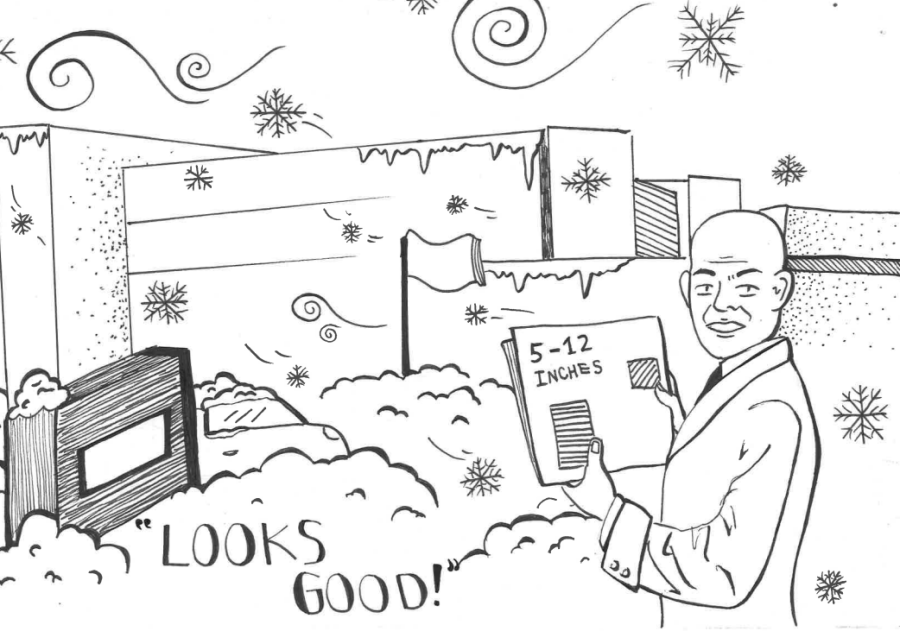Inclement weather procedure must reflect weather forecast
March 2, 2022
Getting to school on Wednesday, Feb. 2 was anything but usual. Heavy snow preceded by rain made road conditions terrible. Naper Notify, the city of Naperville’s mass notification system, warned residents to avoid driving. Despite a disaster proclamation by the governor, students of District 203 woke up to an avoidable challenge: commuting to school.
What followed was nothing short of a fiasco. Photos of fender benders and cars stuck in snow quickly circulated on social media. Students, many of them inexperienced drivers, asked parents to navigate the roads that morning. Late buses left students waiting in a snowstorm. Some never made it to school, and even those who braved the weather were greeted with a school day largely devoid of learning.
At 11:28 a.m., only hours into the school day, Superintendent Dan Bridges sent an email excusing all absences and acknowledging “conditions changed quicker than anticipated.” By every measure, District 203 should not have held school as normal on Feb. 2.
But we knew what was coming. Weather forecasts foretold a snowstorm days in advance, the governor’s disaster proclamation came the evening before, and neighboring school districts in Bolingbrook, Oswego, Plainfield, to name a few, canceled school, almost all the night before.
Evidently, our current system of determining and communicating remote learning snow days is deeply flawed. While the criteria Bridges outlined in his email, consulting with the buildings and grounds team, transportation team and local municipalities as well as assessing road conditions is relatively reasonable, it’s missing one critical piece: the weather forecast.
The weather changes, and as we saw on Feb. 2, assessing road conditions at 4 a.m. isn’t representative of how the roads will be later in the day. Opting for a decision based on the weather forecast would be more accurate, but more importantly, our district leadership could make a decision the night before, and effectively communicate to the school community, similar to what neighboring districts do.
For those with before-school activities and teachers who live farther away, earlier communication would allow them to plan ahead. It would alleviate much of the anxiety students, teachers and parents have the night before. Furthermore, considering the new e-learning option allowing for learning outside the classroom, it makes sense to err on the side of caution when deciding whether to require students to commute to school in inclement weather.
Announcing a remote learning day on Feb. 17 the night before was the best decision in the face of inclement weather, and we commend the district for utilizing resources available to them to make the decision. Even though the snow was less severe than anticipated, the more timely communication allowed for teachers and students to better prepare for the next school day and we hope Feb. 17 reflects a common practice for the future.
No system is perfect, and Feb. 2 is evidence of that, but when the flaws of a system are exposed, we must work to fix them. Resources like e-learning and weather forecasts are tools we can and should use to improve the quality of snow-day decisions as well as the communication between administrators and the school community.







